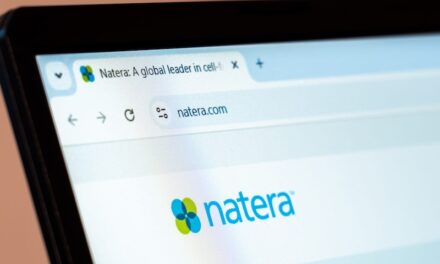Summary: Breakthrough Genomics is launching a new version of its fully-automated genome reader aimed at democratizing clinical genomic interpretation and speeding up rare disease diagnosis.
Key takeaways:
- Virtual Geneticist (VG) offers a streamlined interface, allowing users to input clinical and genomic data and receive results in minutes without cumbersome onboarding.
- A 2023 study found VG helped solve 10% of previously unsolved pediatric cases, identifying the causal variant 99% of the time in a Top 10 List.
- VG uses AI to enhance variant analysis, offering advanced tools like 3D protein structure predictions and detection of hard-to-diagnose conditions.
Breakthrough Genomics is preparing to launch a new version of its fully-automated, genome reader Virtual Geneticist (VG). The company, which will make VG publicly available and free of cost, says it aims to democratize clinical genomic interpretation and accelerate rare disease diagnosis for patients and their families both in the U.S. and overseas.
About the Genome Reader Platform
The newly designed VG platform has a more streamlined interface, allowing users to enter basic clinical information and the accompanying genomic data, and receive the correct results in minutes. Users will notice VG’s stripped-down landing page functions lack any cumbersome and overly complicated onboarding procedures required by its competitors, the company says. This means VG can be easily used as a tool to analyze new genomic testing data or double-check results from prior tests, especially for cases when no diagnostic variant was identified.
A 2023 study conducted by clinicians at British Columbia Children’s Hospital found that using VG helped them solve an additional 10% of pediatric cases previously reported as negative. This is critical because a false negative report can often prevent newborns and children from receiving the most appropriate treatment or the clinical interventions they need. In the same study, VG was able to correctly identify the causal variant in a Top 10 List 99% of the time. Not only does this save a geneticist tedious work in sifting through unlikely variants, but it also enables them to quickly zero in and review the supporting evidence for the variants most likely responsible for the patient’s condition.
“Variant interpretation is becoming increasingly more complex, so having a tool like Virtual Geneticist allows me to quickly see how different phenotype terms selected for the analysis influences the ranking of the variants and it also allows me to contextualize any reported variant of unknown significance (VUS),” says Adrienne Elbert, MD, PhD, who led the study at BC Children’s Hospital.
Laura Li, PhD, founder and CEO of Breakthrough Genomics, stresses the role that AI plays in VG’s ability to maximize efficiency and performance in evaluating difficult cases.
“As a medical geneticist, I used to spend many hours on each case pouring through the different databases and publications, but with VG these once critical tasks can now be performed effortlessly and with a precision that is far beyond what a person alone can accomplish.”
One example of how VG stands out from other platforms is its ability to instantaneously read and interpret variant classifications contained within individual publications. This saves users a significant amount of time and allows them to use the platform’s other AI-powered tools for further analyses, including prediction of a variant’s effect on 3D protein structure and detection of previously hard-to-diagnose conditions such as trinucleotide repeat expansions and spinal muscular atrophy.
Breakthrough Genomics aims to attract a wide variety of users to the platform including medical doctors and clinicians who in traditional workflows do not often get involved in variant analysis.
“As a Medical Geneticist I am frequently perplexed by negative genetic test reports that I receive back from a commercial lab when I am convinced that the patient has a genetic disorder,” says Cornelius Boerkel, MD, PhD, at BC Children’s Hospital sees the clear benefit of using VG in his practice. “By using Virtual Geneticist, I am able to analyze the data files that are generated by these commercial labs and verify on my own what are the most likely variants that explain the patient’s disease. The platform’s straightforward interface makes it easy for me, without requiring me to understand complicated bioinformatic programming or have extensive onboarding for using a particular software tool.”





